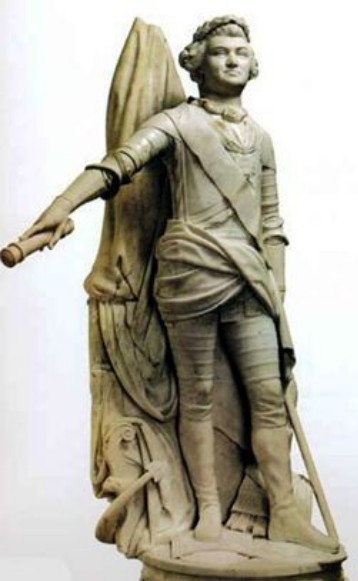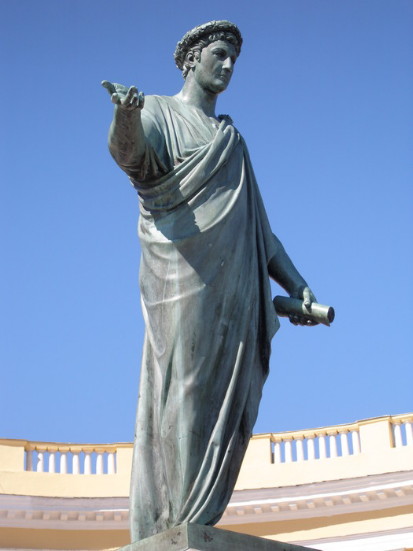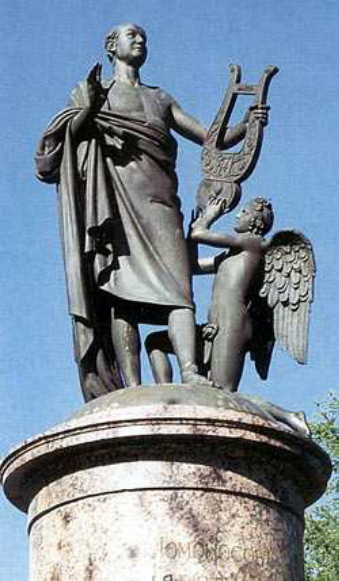Martos, Ivan P.
Martos, Ivan P. [Мартос, Іван], b ca 1754 in Ichnia, Pryluky regiment, Hetman state, d 17 April 1835 in Saint Petersburg. Sculptor; father of Oleksander Martos. Born into a Cossack starshyna family of the Poltava region, Martos studied at the Saint Petersburg Academy of Arts (1764–73) and in Rome under Antonio Canova (1774–9), where he became a proponent of Classicist style of sculpture. He taught at the Saint Petersburg Academy (1779–1835; as senior professor from 1794) and served as its rector (1814–35). Martos created numerous sculptures in Russia and Ukraine, including the burial monuments of Hetman Kyrylo Rozumovsky in Baturyn (1803–5) and Count Petr Rumiantsev at the Kyivan Cave Monastery (1797–1805) and statues of Count Armand-Emmanuel du Plessis duc de Richelieu in Odesa (1823–8), Emperor Alexander I in Tahanrih (1828–31), and Prince Grigorii Potemkin in Kherson (1829–36). His works are noted for their monumental, but restrained and lucid classicist form that conform to the Classical ideal of beauty and idealize the virtues of courage, patriotism, and civic duty. His work had a considerable influence on many sculptors in the Russian Empire in the first half of the 19th century.
[This article was updated in 2020.]
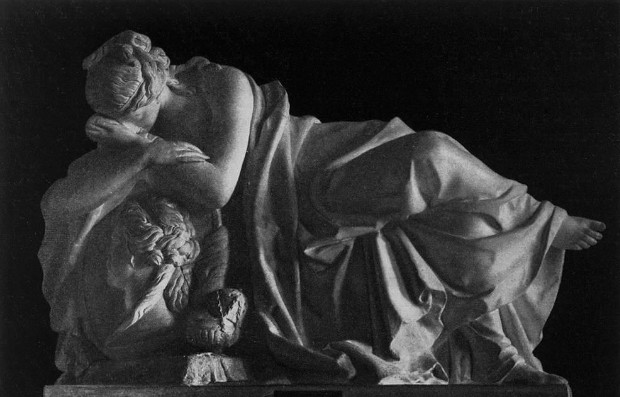
.jpg)

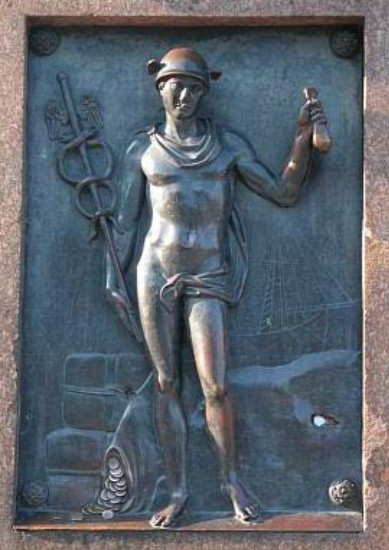
.jpg)
.jpg)
